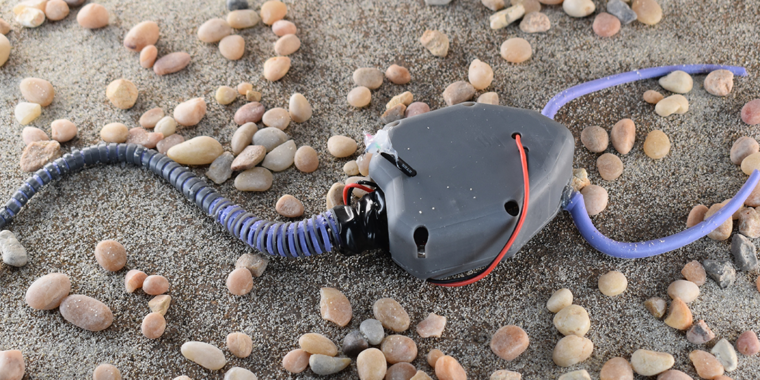Decoding Prehistoric Movements through Paleobionics
Scientists and engineers traditionally find inspiration for soft robots in modern-day living organisms. Previous reports have highlighted applications that mimicked creatures such as squid, grasshoppers, and cheetahs. However, a groundbreaking study has recently emerged, merging the realms of soft robotics and paleontology to create a soft-robot replica of the ancient pleurocystitid, a sea creature that thrived 450 million years ago.
Unraveling Ancient Mysteries
Pleurocystitids, relatives of modern echinoderms like starfish and brittle stars, are significant in evolutionary studies. These organisms were amongst the first echinoderms believed to possess the ability to move using a muscular stem to navigate their watery environments. Despite knowledge about their life habits and posture, the precise mechanisms controlling their stem movements remained shrouded in controversy due to the scarcity of fossil evidence.
The development of a soft-robot replica named “Rhombot” has enabled researchers to decode the movement patterns of pleurocystitids and shed light on the evolutionary trajectory of echinoderms. This innovative study introduces the concept of paleobionics, utilizing soft robotics and fossil data to delve into biomechanical variances across different life forms.
A Collaborative Approach
Overcoming the challenges inherent in replicating an extinct organism as ancient as pleurocystitid required collaboration between researchers and paleontologists specializing in echinoderms. By synthesizing fossil images, CT scans, and other available evidence, the team meticulously crafted the body and stem of the soft-robot based on their design.
Utilizing elastomer casting and 3D printing techniques, the researchers successfully constructed various components of the Rhombot, aiming to mimic the intricate structures of the original pleurocystitid. Challenges arose during attempts to replicate the soft muscular stem of the ancient creature, leading to the adoption of novel materials like shape memory alloy wire to achieve lifelike flexibility.
Insights from Simulation
Through simulations, researchers discovered that the length of the stem significantly influenced the underwater movement of the Rhombot, mirroring evolutionary trends observed in fossil records. Experimental tests conducted in a controlled environment further supported the hypothesis that longer stems enhanced propulsion efficiency without incurring additional energy costs.
Exploring Extinct Biomechanics
The endeavor of constructing functional replicas of extinct creatures through paleobionics unveils a realm of exploration beyond the confines of existing species. By delving into the locomotion and biomechanics of ancient life forms, researchers aim to glean insights into the evolutionary principles that governed diverse organisms throughout history.
Soft robotics offers a unique avenue to “resurrect” extinct beings and unravel the mysteries of their movements, providing invaluable data that extends beyond what traditional fossil analysis can reveal. The convergence of robotics and paleontology opens new vistas for experimental investigations into the diverse range of life forms that once populated our planet.
Image/Photo credit: source url





